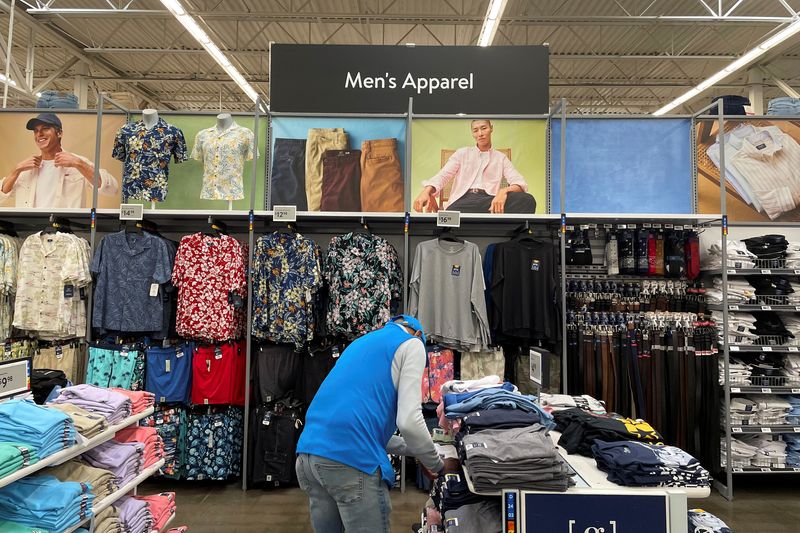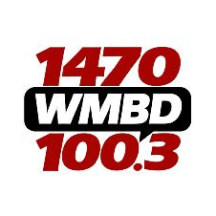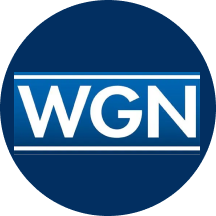
By Lucia Mutikani
WASHINGTON (Reuters) -U.S. retail sales increased solidly in July, supported by strong demand for motor vehicles as well as promotions by Amazon.com and Walmart, though a softening labor market and higher goods prices could curb consumer spending growth in the third quarter.
The rise in retail sales last month together with an upward revision to June's data, reported by the Commerce Department on Friday, eased some concerns that economic activity was stalling following soft employment growth over the past three months.
"Retail sales do not give the economy a complete bill of health, but at least the consumer is not in headlong retreat and the outlook for continued moderate economic growth this quarter is positive," said Christopher Rupkey, chief economist at FWDBONDS. "The majority of import tariff price hikes on goods are still off in the future, however, so time will tell how consumers will react when they see higher prices on goods in shops at the mall in the months to come."
Retail sales rose 0.5% last month after an upwardly revised 0.9% gain in June, the Commerce Department's Census Bureau said. Economists polled by Reuters had forecast retail sales, which are mostly goods and are not adjusted for inflation, would increase 0.5% after a previously reported 0.6% rise in June.
Part of the rise in retail sales last month could be due to tariff-driven price increases rather than volumes. Sales increased 3.9% on a year-over-year basis.
Motor vehicles led the almost broad rise in sales, with receipts at auto dealerships advancing 1.6% after rising 1.4% in June. A rush to buy battery-powered electric vehicles ahead of the September 30 expiration of federal government tax credits helped to drive automobile sales in July, analysts at J.P. Morgan said.
Online sales rose 0.8% after increasing 0.9% in June. Amazon and Walmart held sales promotions last month to lure inflation-weary consumers with deep discounts, including on back-to-school essentials. Amazon extended its sales window to 96 hours, up from the typical 48, featuring aggressive promotions on categories ranging from apparel to electronics.
Clothing store sales rose 0.7% while receipts at furniture outlets jumped 1.4%. Sporting goods, hobby, musical instrument and book store sales rebounded 0.8%. But sales at building material and garden equipment retailers fell 1.0% while receipts at electronics and appliance stores dropped 0.6%.
Households also pulled back on spending at restaurants and bars. Sales at food services and drinking places, the only services component in the report, fell 0.4% after rising 0.6% in June. Economists view dining out as a key indicator of household finances.
U.S. stocks were trading mostly lower. The dollar fell against a basket of currencies. Longer-dated U.S. Treasury yields rose.
DOWNSIDE RISKS
Downside risks to consumer spending are rising. Middle- and higher-income households are mostly driving spending.
Bank of America Institute said an analysis of deposit data showed a widening in the wage gap between lower-income and higher-income households, an indication the labor market "appears to have deteriorated most significantly for lower-income workers." It said while members of lower-income households might not be losing their jobs, "soft labor demand is pressuring their pay and they are potentially working fewer hours."
Retail sales excluding automobiles, gasoline, building materials and food services increased 0.5% last month after an upwardly revised 0.8% rise in June. These so-called core retail sales, which correspond most closely with the consumer spending component of gross domestic product, were previously reported to have gained 0.5% in June.
Adjusted for inflation, economists estimated that core retail sales increased 0.3% in July, marking a decent start to the third quarter. Some of them said the signs of consumer resilience together with rising prices for goods and services argued against the Federal Reserve cutting interest rates next month. Financial markets currently expect a rate cut at the U.S. central bank's September 16-17 meeting.
Expectations that inflation would pick up were reinforced by a separate report from the Labor Department's Bureau of Labor Statistics showing import prices increased 0.4% in July amid a strong rise in the cost of consumer goods.
That followed a downwardly revised 0.1% dip in June. Economists polled by Reuters had forecast import prices, which exclude tariffs, would be unchanged after a previously reported 0.1% gain in June. Prices for imported consumer goods excluding motor vehicles increased 0.4% after edging up 0.1% in June.
"There is no data-based support here for a rate cut in September," said Conrad DeQuadros, senior economic advisor at Brean Capital.
(Reporting by Lucia Mutikani; Editing by Chizu Nomiyama and Paul Simao)

 Reuters US Economy
Reuters US Economy
 WMBD-Radio
WMBD-Radio Benzinga
Benzinga NBC News
NBC News WGN Radio 720 Business
WGN Radio 720 Business Reuters US Business
Reuters US Business Raw Story
Raw Story 5 On Your Side Sports
5 On Your Side Sports